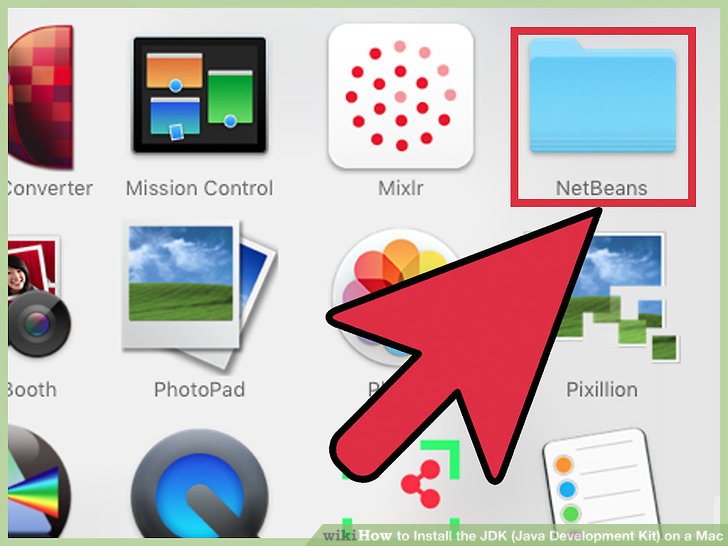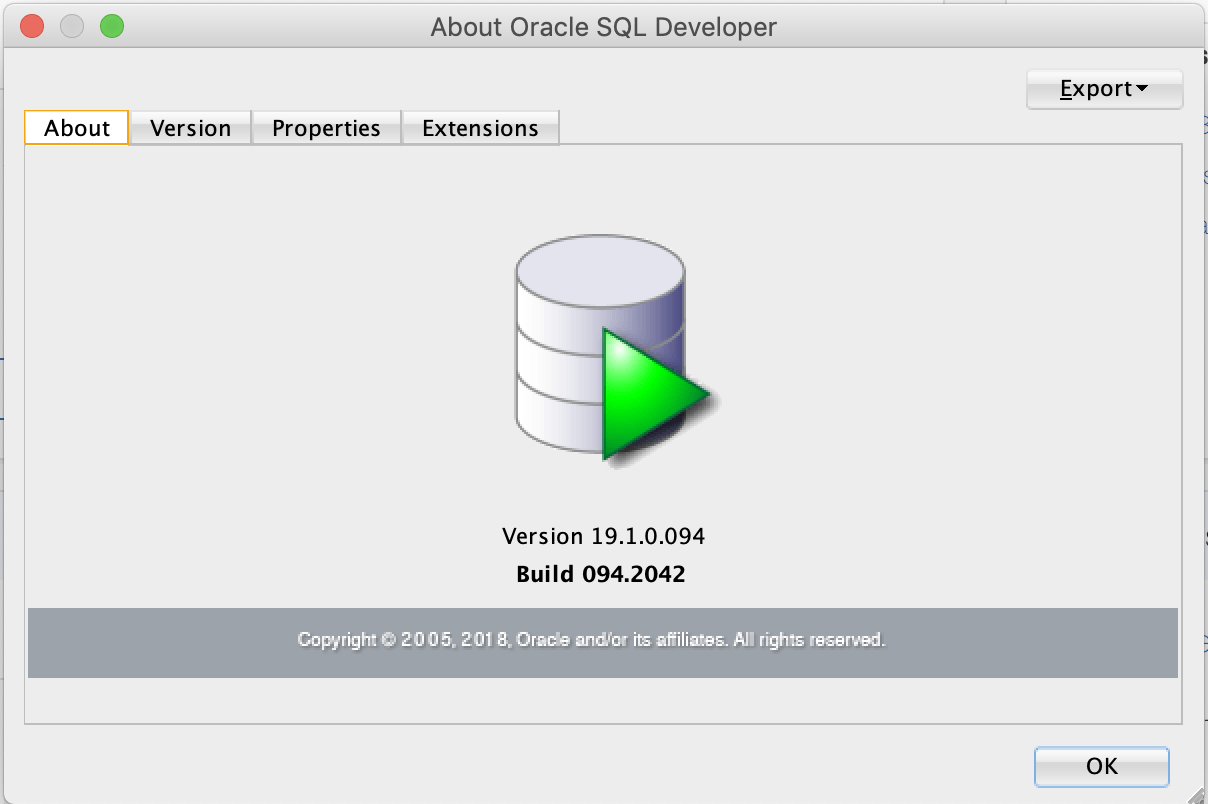- Jdk 13 Interim Update Patch Osx X64 Bin Dmg Windows 10
- Jdk-13.interim.update.patch_osx-x64_bin.dmg
- .dmg File Jdk-13.interim.update.patch_osx-x64_bin.dmg
- Dmg for windows free download. Ampare DMG To ISO Windows GUI to Convert DMG To ISO DMG2IMG - vu1thur, Peter Wu and other: http://vu1tur.eu.org/too.
- Download the JDK.dmg file, jdk-14.interim.update.patchosx-x64bin.dmg. Before the file can be downloaded, you must accept the license agreement. From either the browser Downloads window or from the file browser, double-click the.dmg file to start it. A Finder window appears that contains an icon of an open box and the name of the.pkg file.
- As of Mac OS X v10.6 (Snow Leopard), you can run Java 6 in 32-bit mode on either 32-bit or 64-bit Intel processor equipped Macs. If you cannot upgrade to Snow Leopard, Soy Latte is a pre-compiled version of Java 6 for Intel 32-bit.
- JDK 13 is the open-source reference implementation of version 13 of the Java SE Platform as specified by by JSR 388 in the Java Community Process. JDK 13 reached General Availability on 17 September 2019. Production-ready binaries under the GPL are available from Oracle; binaries from other vendors will follow shortly.
JDK 10 Releases. JDK 10 has been superseded. Please visit jdk.java.net for the current version. Older releases, which do not include the most up to date security.
Overview
In this tutorial, we will go over how to install the Java Development Kit, also known as the JDK. As a reminder, with the license agreement changes for the OracleJDK, you may also consider using the open-source OpenJDK instead. You can find detailed instructions for installing an OpenJDK version here.
Steps
1. Verify JDK is installed
On a Mac:
If you are using a Mac, you may already have the JDK installed. To confirm, open a terminal window by clicking on the terminal icon:
If you do not have a terminal icon as shown above, click on the search icon in the top right corner of the Mac menu bar in order to open the Spotlight search:
In the Spotlight search textbox, type in Terminal and then hit enter to open it:
Next, to confirm that you have Java already installed, type the following command in the terminal window: java -version
If you see a Java version printed on the screen, you've already got the runtime! You can now skip the rest of this tutorial and move on to the next tutorial: Install IntelliJ IDE.
On Windows:
Open a Command Prompt window by going to the WindowsStart menu and type in cmd in the search box. This will bring up a list of matching items and click or press enter on the Command Prompt item as shown below:
This will then open up the Windows Command Prompt as follows:
Next, to confirm that you have the JDK already installed on your Windows computer, type in the following command in the Windows Command Prompt window: java -version
If you see a Java version printed on the screen, you've already got the runtime! You can now skip the rest of this tutorial and move on to the next tutorial: Install IntelliJ IDE.
If instead, you do not have a JDK installed, you will need to check if your Windows operating system is running a 32 bit or 64 bit version. From the Windows Start menu, select Settings and then the About menu:
Jdk 13 Interim Update Patch Osx X64 Bin Dmg Windows 10
NOTE:
- If you are running an older version of Windows, you can follow the instructions from this link to check the bit version of your operating system.
2. Install JDK on Mac
If you don't have a JDK installed, proceed to the Oracle website to download the JDK installer
Note:
- At the time of this tutorial, the latest JDK is version 8, commonly known as JDK 8 for short.
Click Accept license agreement and then select Mac OS X to start the download:
When the download is completed, you can find the installation file for the JDK 8 in the Downloads section of Finder:
Double click on the installation file which in our case is jdk-8u71-macosx-x64.dmg. Then double click on the package icon to start the installation:
This opens the installation window and click Continue button:
Notice it skips the install location because the destination folder on the Mac is pre-configured. Next click on the Install button:
On the Mac, you will need to enter your password and then press the Install Software button:
When the installation is completed, you will see a successful message displayed. Click the Close button to close the installation window.

Verify that you now have a Java runtime by following Step 1 above.
3. Install JDK on Windows
If you don't have a JDK installed, proceed to the Oracle website to download the JDK installer.
Note:
- At the time of this tutorial, the latest JDK is version 8, commonly known as JDK 8 for short.
Click on the Accept license agreement.
At this point, you will need to know if you are running a Windows 32 or 64 bit Operating System. If you do not know this information, please go back to Step 1 above which outlines how to check the bit version of your Windows Operating System.
Next, click on your corresponding Windows x86 (for 32 bit Operating System) or Windows x64 (for 64 bit Operating System) to start the download.
When the download is completed, click on the Run button to start the installation:
This opens the installation wizard and click on the Next button:
The following screen will show the default location for the JDK, and click on the Next button:
This will kick off the installation as follows:
When the installation is completed, you will see a successful message displayed. Click on the Close button to close the installation wizard.
This concludes our tutorial on Scala Environment Setup - Install Java Development Kit (JDK) and I hope you've found it useful!

Jdk-13.interim.update.patch_osx-x64_bin.dmg
Stay in touch via Facebook and Twitter for upcoming tutorials.
Don't forget to like and share this page :)
Summary
In this article, we went over the following:
- How to verify you have JDK already installed.
- How to install the JDK on Mac or Windows.
Tip

.dmg File Jdk-13.interim.update.patch_osx-x64_bin.dmg
- If your Mac has an older version of JDK and you would like to update it to the latest version which at the time of this tutorial is JDK 8, check out this tutorial from Oracle.
Source Code
The source code is available on the allaboutscala GitHub repository.
What's Next
In the next tutorial, I will go over how to install the IntelliJ Integrated Development Environment to help us write and execute our Scala code.
Stay tuned!
The full version string for this update release is 11.0.9+10 (where '+' means 'build'). The version number is 11.0.9.
Complete release notes for Java 11 can be found here.
IANA Data 2020a
JDK 11.0.9 contains IANA time zone data version 2020a. For more information, refer to Timezone Data Versions in the JRE Software.
Security Baselines
The security baselines for the Java Runtime Environment (JRE) at the time of the release of JDK 11.0.7 are specified in the following table:
JRE Family Version = JRE Security Baseline (Full Version String)
- 11 = 11.0.9+7
- 8 = 1.8.0_271-b09
Oracle JDK Expiration Date
Oracle recommends that the JDK is updated with each Critical Patch Update (CPU). In order to determine if a release is the latest, the following Security Baseline page can be used to determine which is the latest version for each release family.
Critical patch updates, which contain security vulnerability fixes, are announced one year in advance on Critical Patch Updates, Security Alerts and Bulletins. It is not recommended that this JDK (version 11.0.9) be used after the next critical patch update scheduled for January 19, 2021.
What's New:
security-libs/java.security
➜ Weak Named Curves in TLS, CertPath, and Signed JAR Disabled by Default
- Weak named curves are disabled by default by adding them to the following disabledAlgorithms security properties: jdk.tls.disabledAlgorithms, jdk.certpath.disabledAlgorithms, and jdk.jar.disabledAlgorithms. The named curves are listed below.
- With 47 weak named curves to be disabled, adding individual named curves to each disabledAlgorithms property would be overwhelming. To relieve this, a new security property, jdk.disabled.namedCurves, is implemented that can list the named curves common to all of the disabledAlgorithms properties. To use the new property in the disabledAlgorithms properties, precede the full property name with the keyword include. Users can still add individual named curves to disabledAlgorithms properties separate from this new property. No other properties can be included in the disabledAlgorithms properties.
- To restore the named curves, remove the include jdk.disabled.namedCurves either from specific or from all disabledAlgorithms security properties. To restore one or more curves, remove the specific named curve(s) from the jdk.disabled.namedCurves property.
- Curves that are disabled through jdk.disabled.namedCurves include the following: secp112r1, secp112r2, secp128r1, secp128r2, secp160k1, secp160r1, secp160r2, secp192k1, secp192r1, secp224k1, secp224r1, secp256k1, sect113r1, sect113r2, sect131r1, sect131r2, sect163k1, sect163r1, sect163r2, sect193r1, sect193r2, sect233k1, sect233r1, sect239k1, sect283k1, sect283r1, sect409k1, sect409r1, sect571k1, sect571r1, X9.62 c2tnb191v1, X9.62 c2tnb191v2, X9.62 c2tnb191v3, X9.62 c2tnb239v1, X9.62 c2tnb239v2, X9.62 c2tnb239v3, X9.62 c2tnb359v1, X9.62 c2tnb431r1, X9.62 prime192v2, X9.62 prime192v3, X9.62 prime239v1, X9.62 prime239v2, X9.62 prime239v3, brainpoolP256r1, brainpoolP320r1, brainpoolP384r1, brainpoolP512r1
- Curves that remain enabled are: secp256r1, secp384r1, secp521r1, X25519, X448. See JDK-8233228
security-libs/org.ietf.jgss:krb5
➜ Support for Kerberos Cross-Realm Referrals (RFC 6806)
- The Kerberos client has been enhanced with the support of principal name canonicalization and cross-realm referrals, as defined by the RFC 6806 protocol extension.
- As a result of this new feature, the Kerberos client can take advantage of more dynamic environment configurations and does not necessarily need to know (in advance) how to reach the realm of a target principal (user or service).
- Support is enabled by default and 5 is the maximum number of referral hops allowed. To turn it off, set the sun.security.krb5.disableReferrals security or system property to false. To configure a custom maximum number of referral hops, set the sun.security.krb5.maxReferrals security or system property to any positive value.
Previous versions:
Recent Java JDK news
- Python also gained some 2.2 million developers in the past year and came in second-place
- 150 votesJava allows you to play online games, chat with people around the world, calculate your mortgage interest, and view images in 3D, just to name a few. This new version is considered a Critical Patch Update.
- Freeware
- Windows/macOS/Linux
- 25 votesJava SE 15.0.1 is the latest release of Java SE Platform. Oracle strongly recommends that all Java SE users upgrade to this release.
- Freeware
- Windows/macOS/Linux
- 115 votesThe Java Platform lets you develop and deploy Java applications on desktops and servers, as well as in today's demanding embedded environments.
- Freeware
- Windows